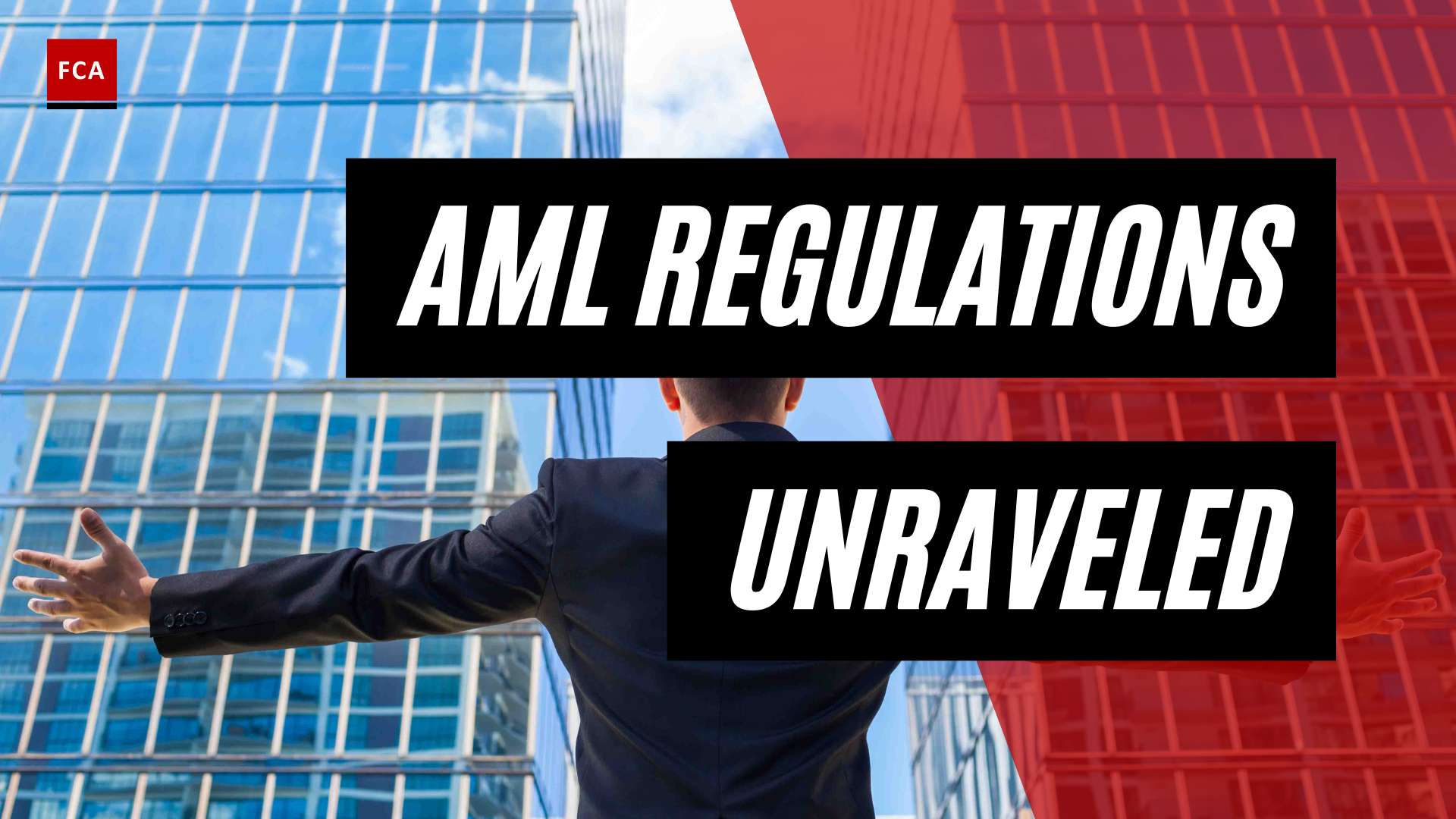Understanding Money Laundering Schemes
Money laundering is a serious financial crime that involves disguising the illicit origins of funds to make them appear legitimate. It is a complex process that enables criminals to integrate illegal proceeds into the legitimate financial system. Understanding the definition of money laundering and the importance of identifying red flags is essential in combating this illicit activity.
Definition of Money Laundering
Money laundering is the process of concealing the true origin, ownership, or destination of illicitly obtained funds. Criminals engage in money laundering to make the proceeds of their illegal activities appear legitimate, making it difficult for law enforcement authorities to trace and seize these funds. Money laundering typically involves three stages: placement, layering, and integration.
- Placement: This initial stage involves introducing illicit funds into the financial system. Criminals often use a variety of methods, such as structuring deposits to avoid reporting requirements, smurfing (breaking down large amounts into smaller transactions), or using money mules to transport cash across borders. These techniques help obscure the origins of the funds.
- Layering: In the layering stage, the illicit funds undergo a series of complex transactions to further obfuscate their origins. This may involve transferring funds between multiple accounts, converting funds into different forms (such as purchasing assets or engaging in international wire transfers), or conducting transactions through shell companies and offshore entities. The objective is to create a convoluted paper trail that makes it challenging for authorities to trace the money.
- Integration: The final stage of money laundering involves integrating the laundered funds back into the legitimate economy. This can be achieved by investing in legitimate businesses, purchasing real estate or luxury goods, or simply commingling the illicit funds with legitimate funds. By doing so, criminals attempt to legitimize the proceeds of their illegal activities.
Importance of Identifying Red Flags
Identifying red flags is crucial in combating money laundering schemes. Red flags are indicators or warning signs that suggest the possibility of money laundering activities. By recognizing these indicators, financial institutions and regulatory bodies can take appropriate measures to mitigate the risks associated with money laundering.
Some common red flags in anti-money laundering (AML) compliance include:
-
Insufficient or Suspicious Information Provided by Customers: When customers provide incomplete, false, or suspicious information, it may raise concerns about the legitimacy of their activities. Financial institutions should conduct thorough due diligence to verify customer identities and assess the legitimacy of their transactions. For a comprehensive list of red flags in customer behavior, refer to our money laundering red flags checklist.
-
Resistance to Recordkeeping and Reporting Requirements: Customers who display reluctance or resistance to comply with recordkeeping and reporting requirements mandated by AML regulations may be attempting to evade detection. This behavior should be considered a red flag, and financial institutions must monitor and investigate such instances to ensure compliance.
-
Inconsistent Business Activity: Unusual or inconsistent patterns of business activity, such as transactions falling outside the norm of routine or established behavior, should be treated as red flags. These anomalies may indicate attempts to initiate money laundering activities.
It is important for financial organizations to establish robust AML compliance programs that include the identification and reporting of red flags. By promptly identifying and reporting suspicious transactions to the relevant authorities, financial institutions play a crucial role in combating money laundering and protecting the integrity of the financial system.
To effectively combat money laundering, it is essential to stay vigilant and continuously update knowledge on emerging money laundering techniques and trends. By understanding the red flags and indicators associated with money laundering schemes, professionals in compliance, risk management, anti-money laundering, and anti-financial crime can proactively identify and mitigate the risks posed by money laundering activities.
Red Flags in High-Risk Industries
In high-risk industries, it is crucial to be aware of potential red flags that may indicate vulnerabilities or challenges in the implementation of anti-money laundering (AML) measures. These red flags can help professionals working in compliance, risk management, and anti-financial crime to identify areas that require increased scrutiny. Three common red flags in high-risk industries are technology limitations, difficult implementation processes, and high costs.
Technology Limitations
Technology limitations can be a significant red flag in high-risk industries. Outdated or inadequate technology systems can hinder the effective implementation of AML measures, making it difficult to detect and prevent money laundering activities. These limitations may include:
- Lack of advanced data analytics capabilities to identify patterns and anomalies in financial transactions.
- Inadequate integration between different systems, leading to fragmented data and an incomplete view of customer activity.
- Insufficient automation, resulting in manual and time-consuming processes that increase the risk of errors and delays.
To address this red flag, organizations should invest in robust and up-to-date technology solutions that can effectively support their AML compliance efforts. By leveraging advanced technologies, such as machine learning and artificial intelligence, organizations can enhance their ability to detect suspicious transactions and activities in real-time.
Difficult Implementation Processes
Difficult implementation processes can pose challenges in establishing and maintaining effective AML measures. These challenges may arise due to various factors, including:
- Complex regulatory requirements that require a thorough understanding and interpretation.
- Lack of clear guidance or resources to support implementation efforts.
- Resistance to change within the organization, making it challenging to introduce new processes and procedures.
It is important for organizations to develop a comprehensive implementation plan that takes into account the specific requirements of their industry and regulatory environment. This plan should include clear roles and responsibilities, adequate training for employees, and ongoing monitoring and evaluation to ensure compliance.
High Costs
Implementing robust AML measures can be a costly endeavor for organizations operating in high-risk industries. The costs associated with AML compliance may include:
- Investment in technology infrastructure and software.
- Hiring and training of skilled personnel to manage compliance efforts.
- Ongoing monitoring and auditing activities to detect and prevent money laundering.
While the costs of AML compliance can be substantial, organizations must recognize that the potential consequences of non-compliance, such as regulatory fines and reputational damage, can far outweigh these initial investments. By prioritizing AML compliance and allocating sufficient resources, organizations can mitigate the risks associated with money laundering activities.
By being aware of these red flags in high-risk industries, professionals can proactively address potential vulnerabilities and enhance their AML compliance efforts. It is important to stay updated on industry best practices and regulatory requirements to ensure that AML measures remain effective and aligned with evolving risks.
Red Flags in Anti-Money Laundering Compliance
When it comes to anti-money laundering compliance, identifying red flags is crucial in detecting and preventing illegal activities. Here are some common red flags to watch out for:
Insufficient or Suspicious Information Provided by Customers
One of the key red flags in anti-money laundering compliance is when customers provide insufficient or suspicious information. This could include incomplete or inconsistent identification details, unclear sources of funds, or unverifiable business activities. Such behavior raises concerns and may indicate potential illegal activity (Source).
Financial institutions and businesses should have robust customer due diligence processes in place to ensure the accuracy and legitimacy of the information provided. Conducting thorough background checks, verifying identities, and closely examining transaction patterns can help identify potential risks and take appropriate actions.
Resistance to Recordkeeping and Reporting Requirements
Another red flag in anti-money laundering compliance is when customers exhibit resistance to complying with recordkeeping and reporting requirements mandated by AML regulations. This resistance may suggest an attempt to evade detection and could be an indicator of potentially illegal activities (Source).
Financial institutions should ensure that customers are aware of their obligations and responsibilities in terms of recordkeeping and reporting. Any reluctance or attempts to avoid these requirements should be thoroughly investigated and reported to the relevant authorities.
Inconsistent Business Activity
Inconsistent business activity is also a red flag that should be closely monitored in anti-money laundering compliance. This refers to transactions or patterns of behavior that fall outside the norm of routine or established activity. Unexplained fluctuations in transaction volumes, sudden changes in business focus, or unusual patterns of fund movement can raise suspicions of potential illegal activities (Source).
Financial institutions and businesses should have systems in place to monitor and analyze customer activity. By applying data analytics and risk-based approaches, they can identify and investigate any inconsistencies in business activity. This proactive approach helps in detecting and preventing money laundering and other illicit financial activities.
By recognizing these red flags and implementing appropriate measures, financial institutions and businesses can enhance their anti-money laundering compliance efforts. Regular training of staff, robust customer due diligence, and effective transaction monitoring systems are essential for staying ahead of potential risks and maintaining a strong defense against money laundering activities.
Red Flags for Money Laundering Activities
When it comes to identifying potential money laundering activities, there are specific red flags that professionals in compliance, risk management, and anti-money laundering should be aware of. These red flags serve as indicators that certain transactions or individuals may warrant further scrutiny. Here are three key red flags to watch out for:
Unusual Transactions
Unusual transactions are often a red flag for potential money laundering activities. These transactions can take various forms and may involve behaviors inconsistent with a customer’s typical transactions. Some examples of unusual transactions include:
- Large or frequent cash deposits or withdrawals that are uncharacteristic for the customer’s normal business operations.
- Transfers of funds to or from high-risk jurisdictions or countries known for lacking adequate anti-money laundering regulations.
- Unexplained third-party payments or transactions involving complex structures that make it difficult to trace the source of funds.
- Rapid movement of funds between multiple accounts or across different financial institutions.
Identifying and investigating these unusual transactions is crucial in preventing and combating money laundering. It’s important for professionals to have a money laundering red flags checklist to help them recognize and respond to these suspicious activities.
Transactions Involving Large Amounts of Cash
Transactions involving large amounts of cash can also raise red flags for potential money laundering activities. The use of cash can make it challenging to trace the source and destination of funds, creating an opportunity for illicit activities. Some indicators of transactions involving large amounts of cash include:
- Cash deposits or withdrawals exceeding certain thresholds established by local regulations or internal policies.
- Structuring transactions to avoid triggering cash reporting requirements, such as making multiple smaller deposits instead of a single large deposit.
- Payments made in cash for goods or services that are typically conducted using electronic means.
- Cash-intensive businesses, such as casinos or money service businesses, that handle significant amounts of cash without adequate justification.
Monitoring and reporting these transactions is essential in combating money laundering. Financial institutions and businesses should implement robust systems and controls to detect and prevent suspicious cash transactions.
Politically Exposed Persons (PEPs)
Politically Exposed Persons (PEPs) are individuals in high-ranking or influential positions who may be more susceptible to corruption and money laundering. This category typically includes heads of state, senior politicians, government officials, and their immediate family members or close associates. Transactions involving PEPs can present a higher risk of money laundering due to their potential involvement in illicit activities.
Financial institutions and businesses should exercise enhanced due diligence when dealing with PEPs. This may involve conducting more thorough background checks, monitoring transactions and relationships more closely, and implementing stricter controls to mitigate the higher risks associated with these individuals.
By being vigilant for these red flags, professionals can help detect and prevent money laundering activities. However, it’s important to note that these red flags should not be considered definitive evidence of money laundering. They serve as indicators that warrant further investigation and due diligence. To effectively combat money laundering, professionals should continuously stay updated on evolving money laundering techniques and indicators.
Red Flags in Anti-Corruption Compliance
When it comes to combating corruption, identifying red flags and indicators is crucial for organizations to detect and mitigate potential risks. Anticorruption red flags serve as warning signs that suggest the potential presence of corrupt practices within an organization, transaction, or relationship. By understanding and recognizing these red flags, companies can take proactive measures to ensure compliance, protect their financial integrity, and maintain a strong ethical foundation (Foley).
Suspicious Behavior and Activities of Clients
One of the key red flags in anti-corruption compliance is the observation of suspicious behavior and activities exhibited by clients. These behavior patterns may include:
- Unusual reluctance or resistance to provide information or documentation related to business transactions.
- Attempts to influence decision-making processes through bribery, gifts, or other unethical practices.
- Unexplained and sudden changes in business activities or relationships.
- Inconsistencies between declared income and assets.
By closely monitoring and investigating these suspicious behaviors, organizations can identify potential instances of corruption and take appropriate action to mitigate the risks involved.
Unusual Transaction Patterns
Unusual transaction patterns can also be indicative of corruption risks. These patterns may include:
- Frequent and unexplained cash transactions.
- Transactions involving large sums of money that lack a clear business purpose or justification.
- Multiple transactions with no apparent economic or legitimate reason.
- Transactions involving a complex web of intermediaries or offshore entities.
These irregularities in transaction patterns may suggest attempts to hide illicit funds or facilitate corrupt activities. Organizations should exercise enhanced scrutiny and due diligence when encountering such transactional red flags.
Transactions Involving High Corruption Risk Countries
Transactions involving countries with a high corruption risk are particularly susceptible to corruption-related issues. These countries may have a history of weak governance, inadequate anti-corruption measures, or a culture of bribery. Conducting business in these jurisdictions requires organizations to exercise extra caution and implement robust anti-corruption measures.
To mitigate the risks associated with transactions involving high corruption risk countries, organizations should conduct thorough due diligence on potential business partners, intermediaries, and third-party contractors. This involves assessing their reputation, integrity, and compliance with anti-corruption laws.
By remaining vigilant and recognizing these red flags in anti-corruption compliance, organizations can strengthen their ability to prevent and address corrupt practices. Implementing comprehensive compliance programs, providing anti-corruption training to personnel, and conducting regular risk assessments are essential steps toward maintaining a culture of integrity and ethical business conduct.
Red Flags in Workplace Safety
Maintaining a safe work environment is crucial, especially in high-risk industries. Failure to address red flags and indicators of workplace safety issues can lead to accidents, injuries, and potential legal consequences. In this section, we will explore three common red flags in workplace safety: violations of safety protocols, poor maintenance practices, and inadequate safety equipment.
Violations of Safety Protocols
One of the key red flags in workplace safety is the consistent violation of safety protocols. Safety protocols are implemented to protect employees and prevent accidents. When employees disregard or consistently fail to follow these protocols, it can indicate a lack of commitment to safety and increase the risk of accidents.
Common violations of safety protocols include:
- Failure to use personal protective equipment (PPE) when required
- Ignoring safety guidelines and procedures
- Disregarding warning signs and labels
- Improper use or maintenance of machinery and equipment
To address violations of safety protocols, employers should provide comprehensive safety training to employees, clearly communicate the importance of following safety guidelines, and enforce consequences for non-compliance. Regular inspections and audits can help identify areas of concern and reinforce the importance of adhering to safety protocols.
Poor Maintenance Practices
Poor maintenance practices can also be red flags for workplace safety issues. Inadequate maintenance can lead to equipment failures, malfunctioning machinery, and hazardous conditions. When maintenance tasks are neglected or not performed properly, it increases the risk of accidents and injuries.
Examples of poor maintenance practices include:
- Failure to conduct regular inspections and maintenance checks
- Ignoring or delaying equipment repairs
- Lack of proper lubrication and servicing
- Inadequate upkeep of safety features and emergency systems
Employers should establish maintenance schedules, ensure that maintenance tasks are carried out by qualified personnel, and document all maintenance activities. Regular safety audits and inspections can help identify areas where maintenance practices may be inadequate, allowing for prompt corrective actions to be taken.
Inadequate Safety Equipment
Another red flag in workplace safety is the presence of inadequate safety equipment. Safety equipment is designed to protect employees from hazards and should be readily available and properly maintained. When safety equipment is lacking or inadequate, it increases the risk of accidents and injuries.
Examples of inadequate safety equipment include:
- Absence or shortage of personal protective equipment (PPE)
- Non-functioning or expired safety devices
- Insufficient emergency response equipment
- Inadequate ventilation systems
Employers should conduct regular assessments to identify the necessary safety equipment for specific job roles and provide appropriate training on its use. It is crucial to ensure that safety equipment is regularly inspected, maintained, and replaced when necessary.
By addressing these red flags promptly and effectively, employers can create a safer work environment and reduce the risk of accidents and injuries. Regular safety audits, thorough investigations into safety incidents, and open communication channels for employees to report concerns are essential components of maintaining workplace safety in high-risk industries. For more information on workplace safety and red flags, refer to the Hawaii Department of the Attorney General.
Implementing Risk-Based Approaches
In order to effectively mitigate the risks associated with money laundering schemes and other high-risk activities, organizations need to implement risk-based approaches. These approaches involve understanding and evaluating inherent and residual risk levels, as well as conducting business-based and relationship-based risk assessments.
Understanding Inherent and Residual Risk
Risk, in the context of anti-money laundering (AML) and counter-financial crime efforts, refers to the likelihood of a negative occurrence or event happening and its consequences. Inherent risk encompasses the threats posed by criminals, third parties facilitating money laundering or terrorist financing, and high-risk products or services. Residual risk, on the other hand, takes into account the effectiveness of the controls and measures in place to mitigate the identified risks (FINTRAC).
By understanding the inherent and residual risk levels, organizations can prioritize their efforts and allocate resources effectively to address the highest areas of concern.
Conducting Business-Based Risk Assessments
Business-based risk assessments involve evaluating the risks associated with various aspects of an organization’s operations. This includes assessing the risks posed by products, services, delivery channels, geography, new developments and technologies, and foreign and domestic affiliates (FINTRAC).
By examining these factors, organizations can identify potential vulnerabilities and areas of concern that may increase the risk of money laundering or other illicit activities. This enables them to implement appropriate controls and measures to mitigate these risks and ensure compliance with relevant regulations.
Conducting Relationship-Based Risk Assessments
Relationship-based risk assessments involve evaluating the risks associated with specific clients and business relationships. This assessment takes into consideration the products, services, delivery channels, and geography in relation to these clients and business relationships (FINTRAC).
By conducting relationship-based risk assessments, organizations can better understand the potential risks associated with specific clients or business relationships. This allows them to tailor their risk mitigation measures and due diligence processes accordingly. It also helps in identifying any red flags that may indicate suspicious or high-risk behavior.
Implementing risk-based approaches is essential in identifying and addressing red flags and indicators of potential money laundering, corruption, and other high-risk activities. By understanding the inherent and residual risk levels, conducting business-based and relationship-based risk assessments, organizations can enhance their ability to detect and prevent illicit activities. This helps ensure compliance with regulatory requirements and protect the integrity of the financial system.









